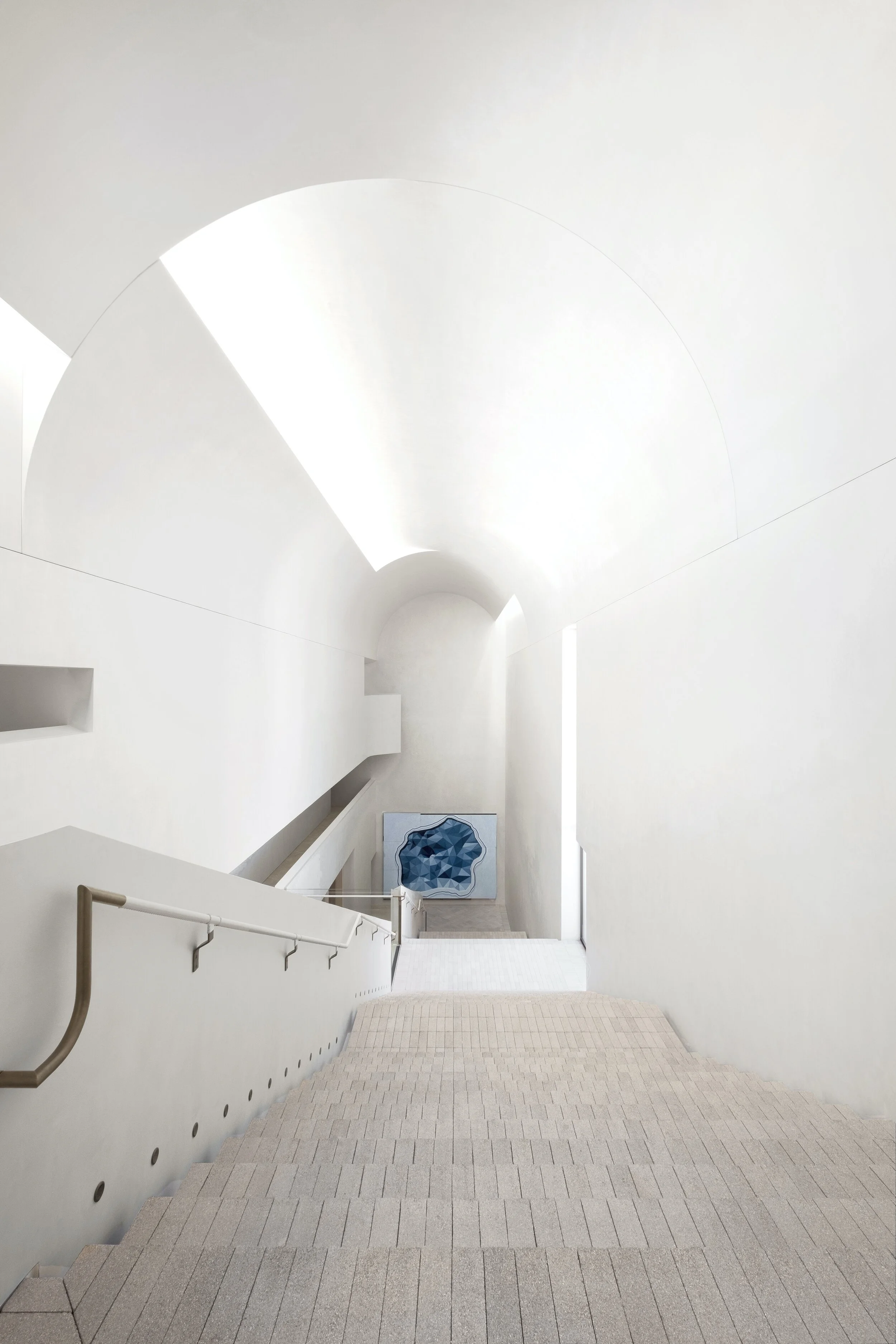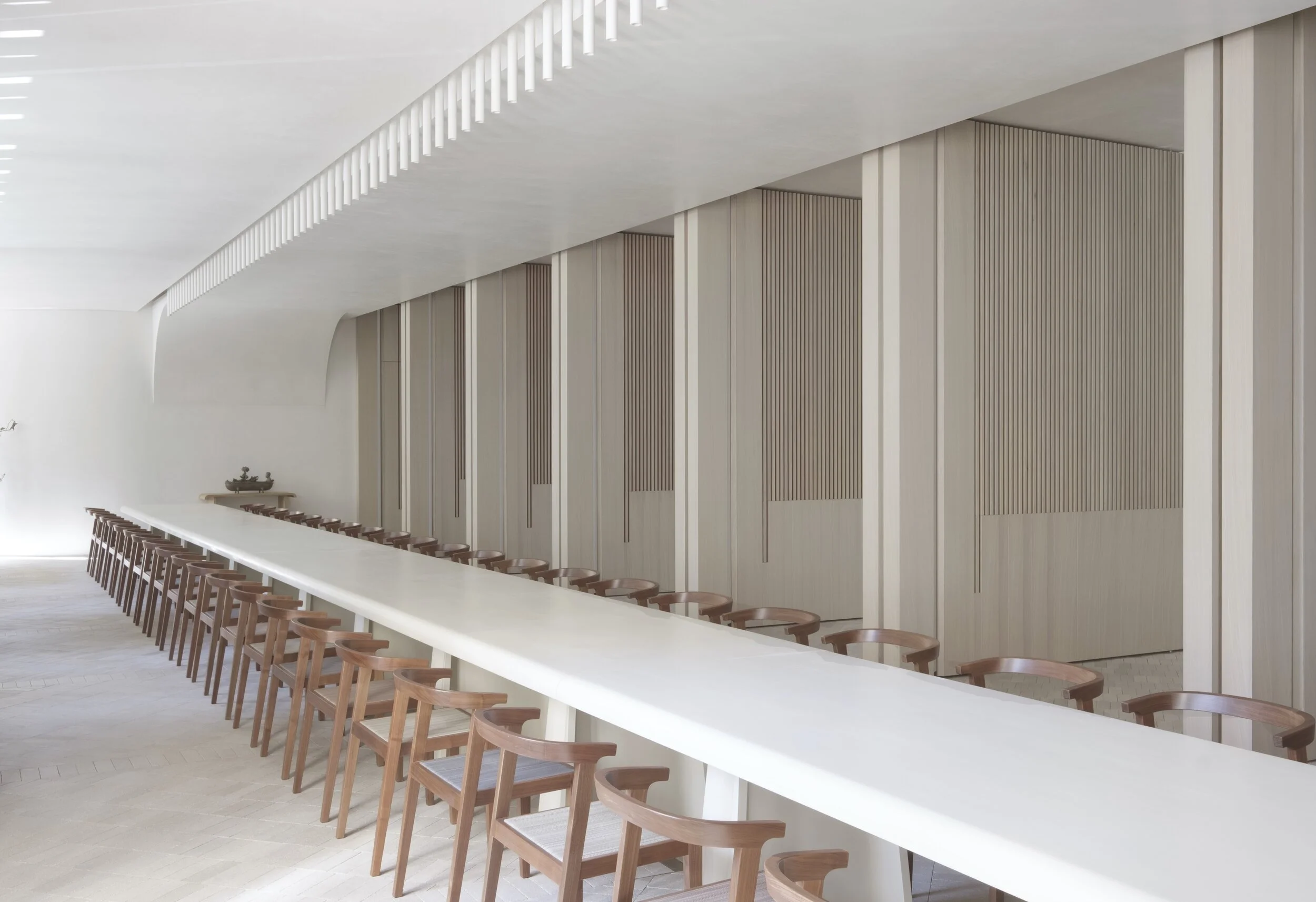William Smart: Eyes on the prize
Architect
Architect William Smart. Photo: Nick Cubbin
Interview by Janne Ryan | Photography by Ted O’Donnell, David Roche, Rowena Moore, Ross Honeysett, Veronique Jenkins
‘Yes’ is a powerful word. Architect William Smart’s life changed course when he said yes to a philanthropist’s request to design ‘the best house in Australia’. Now Smart has delivered a deeply personal commission – a new studio for his practice (Smart Design Studio) and his private home above. The humble brick was his biggest challenge.
Describe your younger self
I learnt very early on how to put things together. My (older) sister and I made our own cubby houses, things like that, and I was obsessed with motor bikes and cars. I wanted to be a car designer, but I loved the heavy stuff like concrete and bricks. Growing up on a farm [a dairy farm in Albany, Western Australia], it seems I’ve spent my life building things and solving problems.
What ambitions did you have?
I was very competitive. I was in the state running team and that discipline and drive of training twice a day, every day, all through high school, as well as studying, is a part of who I am now. I built my world around the things I really liked. My first year of architecture was really hard. I loved physics and economics, and was good at doing complex drawings, but I didn’t know who Matisse was, for example. I had to catch up really quickly.
What was the game changer?
Designing and building Indigo Slam was my dream project. Philanthropist Judith Neilson rang me one day and said: ‘I’d like you to build me a house, the best house in Australia.’ I’d worked with Judith before, having designed her White Rabbit Gallery (around the corner in Chippendale). But this was something else. A once in a lifetime opportunity to do something quite extraordinary.
Indigo Slam in Chippendale, Sydney, by Smart Design Studio. It’s fluted concrete inspired by the work of Spanish Basque sculptor, Eduardo Chillida. Photo: Rowena Moore
What did Indigo Slam teach you?
It was the first time someone had ever said to me ‘be creative, there are no barriers’. I was totally liberated. There are two parts to this: Judith saying ‘make me something great’, and me saying to myself, ‘it’s time to make something great’. [Indigo Slam has gained global recognition and won major architecture awards]
Indigo Slam’s brick staircase under a barrel-vaulted ceiling. Photo: David Roche
“You want someone to come to you with something that electrifies you.”
The banquet hall in Indigo Slam, by Smart Design Studio; furniture by Khai Liew. Photo: David Roche
What makes a great client?
Trust, commitment, vision, respect. And inspiration. You want someone to come to you with something that electrifies you. In my mind, the whole time I was sitting beside Judith while we designed a building that perfectly represents who she is.
What makes a great building?
A great client! It’s a collaboration.
What came after the game-changer?
I’d been wanting to really get my hands dirty on a building site for a year, to get super immersed in the construction of a project. In 2017, my [life] partner John [Adcock] and I embarked on building our own home and a new office for Smart Design Studio in Alexandria, Sydney. So now it’s our turn to be clients, designing something just for us.
“I wanted to take the simplest materials and turn them on their head.”
Bricks defying gravity in the vaulted roofline of William Smart and John Adcock’s new home. Photo: Veronique Jenkins
What was your inspiration for it?
A beautiful image of the Museo Canova, in Possagno, Italy… a fantastical, gorgeous Palladian-style building filled with sculptures. I came home to John one day and said that’s what I think we should create, what do you think? And he said: ‘It's beautiful, let’s do it’.
Bricks, but no mortar?
I wanted to take the simplest materials, like the most basic bricks and tiles, and turn them on their head, do incredible things with them. For example, we’ve built a curved roof out of bricks and glue, with no mortar joints. To do this we brought everyone with knowledge to the table. It’s more than knowing the right type of glue, it's how you apply the glue to the brick in the absence of mortar, and how you deal with irregular joints – of which there are many! We’ve had to work through a lot of issues. Creativity is about thinking and making. That’s what I’ve learned on this project.
Folded and curved brick exterior of Smart Design Studio in Alexandria, Sydney. Photo: Veronique Jenkins
How do you develop your team?
Motivating and nurturing people is a balance – of giving people latitude while guiding them to grow productively within the studio. There are so many specialisations in our work. You can have someone who’s a strong negotiator, someone who’s a strong documenter, and someone who’s very creative. One of our senior people has an extraordinary eye for curves and waves… others are more rigorous in their approach. The right fit is a pretty rare beast.
Where to from here?
I’d love to do more public projects – galleries or museums. What really motivates me, as much as architecture, is carving incredible interior spaces. It’s a challenge: how do you bring in light, how do you move through a space, and how do you bring all this together.
Sydney’s White Rabbit Gallery, Smart’s first project with philanthropist Judith Neilson. Photo: Sharrin Rees

















